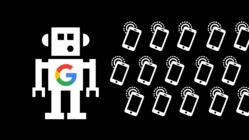Google Data Collection Research

Whoops, Google, it looks like your business model is showing���
In ���Google Data Collection,��� Douglas C. Schmidt, Professor
of Computer Science at Vanderbilt University, catalogs
how much data Google is collecting about consumers
and their most personal habits across all of its products
and how that data is being tied together.The key findings include:
A dormant, stationary Android phone (with the Chrome
browser active in the background) communicated location
information to Google 340 times during a 24-hour period,
or at an average of 14 data communications per hour.
In fact, location information constituted 35 percent
of all the data samples sent to Google.
For comparison���s sake, a similar experiment found that
on an iOS device with Safari but not Chrome, Google
could not collect any appreciable data unless a user
was interacting with the device. Moreover, an idle
Android phone running the Chrome browser sends back
to Google nearly fifty times as many data requests
per hour as an idle iOS phone running Safari.
An idle Android device communicates with Google nearly
10 times more frequently as an Apple device communicates
with Apple servers. These results highlighted the fact
that Android and Chrome platforms are critical vehicles
for Google���s data collection.��Again, these experiments
were done on stationary phones with no user interactions.
If you actually use your phone the information collection
increases with Google.
Pair that with Google’s substantial ad tech, including the network formerly known as DoubleClick, and Google’s data collection reaches well beyond the company’s own properties:
A major part of Google���s data collection occurs while a user is not directly engaged with any of its products. The magnitude of such collection is significant, especially on Android mobile devices, arguably the most popular personal accessory now carried 24/7 by more than 2 billion people.
Digital Content Next | Google Data Collection Research



